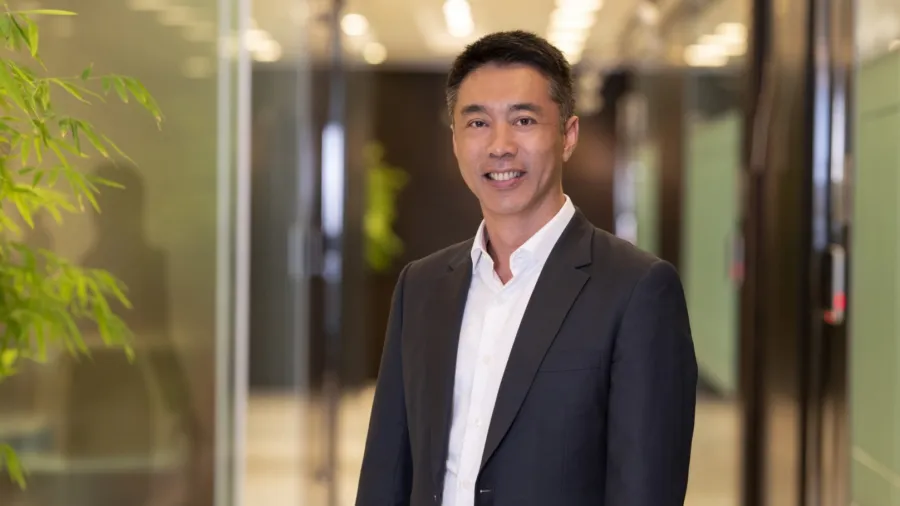
EY’s Liew Nam Soon emphasises vital human-AI collaboration in shaping future of finance
AI, transformations in workforce dynamics, and sustainability are not merely shaping the industry but ensuring a prosperous future for financial enterprises across Asia.
The banking and finance industry in Asia is indeed an ever-changing landscape, driven by several transformative trends that also serve as catalysts for change.
Artificial intelligence (AI), for one, is offering more efficient financial services and enhancing customer experiences. Simultaneously, the workforce within the industry is changing, as their expertise now goes hand-in-hand with AI capabilities. Meanwhile, sustainability continues to emerge as a critical driver as financial institutions become key agents in promoting ethical and environmentally conscious practices.
Liew Nam Soon, EY Asean Regional Managing Partner, also Managing Partner for Singapore and Brunei at Ernst & Young Solutions LLP, has extensive experience in the realm of finance and strategic consulting, with a remarkable track record that spans over 30 years. In his current role, he is responsible for overseeing business performance, client services strategy and operations in assurance, consulting, tax, strategy and transactions across the EY Asean Region. Previously, he led EY Asean Markets and Financial Services, where he engaged with some of the most influential financial institutions across Asia.
Nam Soon has deep industry experience in financial services and technology. He has worked extensively in wealth and asset management; retail, SMEs, corporate and investment banking; insurance, private equity and FinTech.
In an interview with Asian Banking & Finance, Nam Soon highlighted the remarkable potential of AI in the financial services industry, which, whilst not new to the sector, is poised to revolutionise various aspects of banking and finance, from customer service to risk management. He also delved into workforce transformation in the industry as he advocated for a collaborative approach where humans and AI work together to leverage each other’s strengths.
The Asian banking and finance sector is experiencing rapid growth and evolving market dynamics. From your perspective, what is a key trend or development that you find particularly exciting or promising in the industry, and how do you see it shaping the future of banking and finance in Asia?
The financial services (FS) industry is no stranger to disruption and three key trends stand out in how they could impact the industry’s future – emerging tech like AI, workforce transformation, and sustainability.
First, the acceleration of digitalisation and emerging technology. The financial services industry has long been ahead of other sectors in leveraging digital technology for their services and processes. The onset of open banking has also given rise to digital ecosystems. However, what’s perhaps most exciting is the next frontier in emerging technology – and that is AI.
AI is not entirely new to FS institutions, if you think about how AI-powered chatbots have been in use for years. The sector is naturally a fertile ground for AI given the availability of large data sets, coupled with the need for granular predictions. From front- to mid- to back-office operations, use cases of AI are aplenty, including customer service chatbots, personal financial management, dynamic e-KYC on self-service channels, macroeconomic risk management, fraud detection, and compliance monitoring.
Across the world, we are seeing greater sophistication of use emerging. For example, a European bank is using AI-generated synthetic data sets to develop and test new bank offerings. The beauty of this is how the customer information is anonymised in extraction and testing, driving faster R&D cycles, and more user-friendly and customer-centric products, whilst mitigating customer data confidentiality and privacy risks. Another use case is how an Asian bank has developed machine learning credit models for its retail portfolio to strengthen risk management for unsecured loans, leading to enhanced quality of loan screening and reduction of credit losses.
What we are seeing is just the tip of the iceberg of the potential of GenAI or Generative AI. While FS players may be tempted to jump on the bandwagon, the use of GenAI is not quite “plug and play.” Users must apply a certain level of healthy scepticism and guardrails in order to realise its use in a responsible, ethical, and commercially sustainable manner. The governance, model validation, and trust around large language models (LLMs) are key considerations.
What are some of these risks that FS institutions must be careful of?
There are risks of AI that need to be managed and these are sector-agnostic. One is the accuracy of information. LLMs are only as good as the data they are trained on, but these are temporal and may not be completely current. As well, there could be bias in the training data. The responses that AI produces may therefore sound plausible or convincing but could be incorrect or misleading and include hallucinations. A workaround would be to fact-check model validation based on a qualified source.
GenAI is also not a substitute for human judgment where context and nuances are important. Rather than completely replace humans in situations that require judgment (e.g., human agents at call centres), GenAI should be used to augment the workforce’s ability.
Privacy, security, and legality is another significant risk. Disclosures of proprietary data or unintended leaks could occur when staff input internal documents into public LLMs, and these inadvertently become part of the models’ training set. Whilst experimenting is encouraged, care must be taken to avoid exposing proprietary data or sensitive information, and unnecessary storage of such data. These may result in non-compliance with data privacy laws. Meanwhile, there are also questions over ownership of copyright and intellectual property. For instance, when a GenAI model generates a new product design or idea based on a user prompt, who can lay claim to it?
GenAI is evolving so quickly that regulators too are comprehending its impact and implementing responsible AI mandates as risks evolve. It is thus incumbent upon FS institutions to address the risks because ultimately, customer trust and reputation will be theirs to lose.
How might FS institutions who don’t want to be left behind overcome these complexities?
Governance and guardrails are paramount.
FS institutions should also seek to enhance model specificity for their sector. Whilst less highly regulated industries could utilise off-the-shelf GenAI applications, such generic, broad-based AIs lack the domain knowledge to be directly applicable to specialised industries such as FS. Creating a customised LLM will likely incur huge investments and capability requirements. A way around this is for banks to finetune a foundational model from a solution provider by updating and training it with their own data to customise for specific purposes.
For that to work, FS institutions must invest in robust data management systems and data cleaning processes to ensure high-quality data sets. As well, they will need the right talents such as AI prompt engineers, and this means hiring from a very niche and highly competitive talent pool or rapid upskilling of their people. An alternative is to engage professional services support.
With the “rise of machines,” how is the workforce in FS being reshaped?
The reshaping of the workforce is the other trend that will have a lasting impact on the FS industry. It shouldn’t be a case of “human versus machines.” Humans are the drivers, and AI is the co-pilot. At EY, we see the merits of embedding “humans@center” in all transformations and in the way businesses integrate tech and humanity. What that means is to focus on human-centred AI to create systems that harness collaboration of respective strengths. i.e., human creativity, intuition, and empathy; and GenAI’s vast repository of knowledge and analytical capabilities. For AI to be reliable, trusted, and effective, the human element must be there to audit, refine, permit, or remove non-compliant or undesirable AI outputs.
At the same time, the FS workforce will benefit from continuous upskilling – and digital literacy should have been imperative for as long as the industry has been embracing digitalisation. Specifically, consider what broader skills non-technical staff might require to better leverage LLMs, asking better questions and using only data they fully understand and not falling prey to AI’s vulnerabilities. With the impact of technology and AI, from a broader workforce transformation perspective, one can expect to see shifts that entail role redefinition; work redesigning, mobility and retention; new metrics that measure productivity and performance; and revised talent acquisition, development, and retention strategies.
You’ve mentioned sustainability as the third trend to watch. What are the new developments on this front?
Issues around ESG remain highly important. The FS sector plays a critical role in the transition to a more sustainable future. In addition to managing their own net-zero journeys and corporate impact, their influence as finance providers means they can arguably do more than any other industry to integrate long-term ESG criteria into global business and investment.
According to the EY Sustainable Finance Index, FS institutions are making good progress and two areas of opportunities stand out. One is to strive for better governance and ensure accountability and linking remuneration and compensation to sustainability targets; the second is to align product offerings to green strategies. To that end, FS institutions can certainly forge deeper collaborations with corporate clients, in particular, those in the heavy carbon-emitting sectors, to assist with their ESG activation, and offer green financing and loans securitisation to help them drive down their emissions. Given that ESG measurement is one of the barriers to action, a number of banks are moving towards offering tools – some powered by AI – to provide greater clarity for clients around their environmental footprint, implications, and suggested corrective actions to identify potential cost and carbon savings.
As a judge at the Asian Banking & Finance Awards, what qualities and achievements do you look for in nominees that make them stand out?
Innovations that address a “white space” and create sustainable value for the organisation, its customers and employees, and other stakeholders will stand out. What makes an innovation even more distinctive is how it embeds the principles of purpose, diversity and inclusion, and humans@center in its articulation through to implementation and impact.



















 Advertise
Advertise








